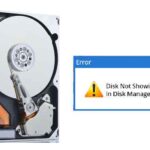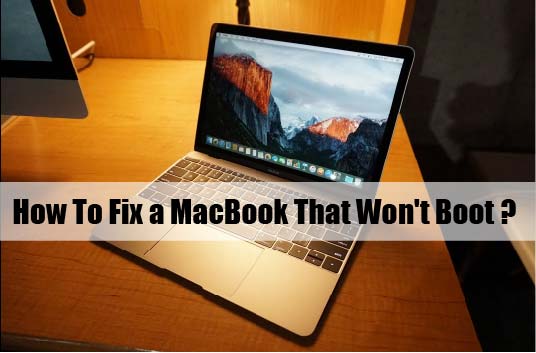Apple devices are not immune to issues. No matter how compelling and powerful the operating system is, iOS devices like Macs and iPads face specific problems common to all users.
Your Mac might indicate a shortage of storage space suddenly. The system may start running slowly. The power button may become unresponsive.
Keeping aside the significant problems, minor issues are also endless. However, if your Mac is not responding and is not turning on, you might want to follow the article here.
What do you think you should do when your Mac won’t boot or turn on? You will initially try to switch off and on the device, again and again, hoping it will work. While at most times that may work, what if it does not this time? You will likely have to force-start the system. Fortunately, there are ways to troubleshoot this issue of MacBooks not booting.
The reason for your MacBook not booting could be anything. There are many possible reasons. The solutions explained in the guide here apply to almost all versions of iOS, even the latest ones.
Hence, before we get to the applicable resolutions, it would help to know the common reasons why your Mac is not turning on.
The primary causes for Mac not turning on or booting are as follows:
- Your Mac is facing some underlying hardware issues.
- The Mac may not be securely connected to the power source.
- Your Mac is running on a low battery.
- There might be an issue with the Mac’s display instead of power.
- Your Mac may contain some broken applications that are hampering the system startup.
- Damaged or corrupted hard discs can also create user account conflicts.
- The Mac may have corrupted system cache files.
- The user login information is incompatible with the MacBook process.
- Sudden error when the system is starting up.
- A sudden loss of internet connection when updating the system can corrupt the software.
While your Mac may face different issues, the above are some common problems that cause the Mac not to boot. So, without further ado, let’s begin with the possible applicable solutions.
Ways to troubleshoot MacBook not turning on
These solutions here consist of both simple and technical methods. You can follow the one you think will solve your Mac’s issue.
Verify Mac’s power status
The very first solution is self-understandable. When you start booting your Mac, ensure it is plugged into the power source. If the cord is not plugged in, the Mac may boot.
If the cable is plugged in, but the power status is still inactive, try swapping the power source or the line. If the charger is damaged, it won’t work. Try cleaning the port if necessary. As a last resort, you can purchase a new charger instead.
Also, Read – Macbook Display Not Turning on – Free Solution
Nonetheless, when you proceed to Boot your MacBook, you should unplug every external peripheral from it except the power cable. That would help prevent any additional issues due to outer parts.
Try checking any possible signs of power on your Mac. Press the Power button and see if the fan or hard disk is running. See if any light status turns on.
Perform a Power Cycle on your Mac.
If none of the power statuses are lighting up, you might as well perform a power cycle on your Mac. It means you must force-start your Mac after completely stopping the power.
Here’s how you do a Power Cycle on MacBook:
- Hold down the Power Button of your Mac for about 10 seconds before releasing it. Since the system power is forcibly cut, you can hear a squeaking sound.
- Wait for some time and restart the system again.
- If that does not work, unplug every possible external connection and power cable before starting the device again.
If Power Cycle also did not work, you can try out the other available solutions.
Check Mac’s hardware.
Check all the connected hardware pieces if you are using a Mac desktop. If there are any discrepancies, reset all of them again. You might as well do an Apple Hardware Test if the system is still not turning on.
Here is how you do an Apple Hardware Test:
- Switch on your MacBook and press down the “D” key on the keyboard until the Apple Hardware Test displays on the screen.
- Choose the language preference and press the “Return” key immediately after that.
- Hit the “Test” button on the screen to begin the Hardware testing. You can also go for “Perform Extended Testing” if needed.
- Wait until the test is fully complete to review the result.
- Later, you can shut down or restart your Mac to exit the Apple Hardware Test interface.
Verify your Mac’s Display.
Mac’s display might be another possible cause if you use a Mac Mini or Mac Pro. You can skip this solution if your Mac display is not separately plugged in. The plugged-in display with the Mac will make a sound when the device boots.
A few signs that signify issues with the Mac display are:
- Question mark image.
- Login window
- The lock icon on the screen.
- Prohibitory image.
- Clear empty screen.
- System lock PIN code.
- Spinning globe or Apple logo.
If you see these images on your Mac’s display, they might be causing your Mac not to boot.
Start your Mac in Safe Boot.
Loading every function when starting up could disturb the process of powering up. Booting while the Mac is in Safe Boot limits the loading of system functions and also performs some necessary diagnostics on the system.
If you don’t know how to safely boot your MacBook, here is the process:
- For Intel-powered Mac: Hold down the Shift key and start up your Mac.
- For an M1-powered Mac: Hold the Power button until the screen lights up. Select the “Startup Disk” from the display. Then, hold down the Shift key and start the device in Safe Mode. When you release the Shift key, “Safe Mode” will appear on the screen.
You might see some variations when the system is booting in Safe Mode. If your Mac starts fine with Safe Mode, the startup items are causing the problem. To make changes you can go to > System Preferences > Users & Groups > Click on.
Reset the Mac’s SMC Firmware (System Management Controller).
This solution might be suitable for Intel-based MacBooks. M1-powered MacBooks do not have SMC. If the low-level functions are broken on the system, your Mac will not start. These functions contain the power button, motion sensor, board fan, battery status marker, etc. You might as well rest the SMC firmware if any of these functions are not operating fine.
Restart your Mac in Recovery Mode.
Lastly, an essential solution to fix the Mac not turning on is rebooting your Macbook into Recovery Mode.
- Switch on your MacBook. During the reboot process,m holds down the “Command + R” keys on the keyboard. When you see the macOS Utilities on display, the Recovery Mode Startup is complete.
- If you have a backup, restore your Mac from it.
Last words
MacBooks not booting is not a big issue most of the time. Due to specific hardware and software issues, the problem might escalate at times. But, they can be solved with the right solutions.



















Add Comment